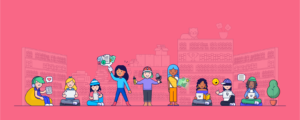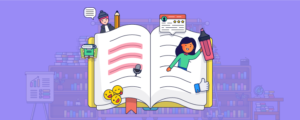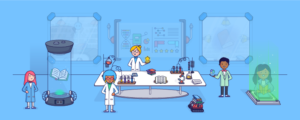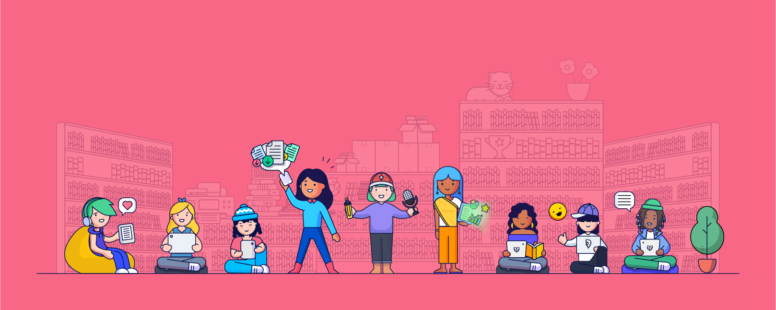Integrating Learner Agency
Christophe Spy/ March 2, 2022/ Teacher Training, Teaching and Learning/ 0 comments
Integrating Learner Agency
Active Learning Empowers Students
The best kind of learners are active learners. Active learners are ones who are in control of their learning. They feel deeply tied to their efforts for achievement and understand the necessity of the important role they have in their own learning. As a result, they are empowered to make choices directly connected to their learning as the ones who have an in-depth awareness of their current level of understanding, academic needs, and mastery goals. To ensure that this kind of active learning is present in the classroom, students benefit from instruction that has learner agency embedded in the design.
Breaking Free From Traditional Models
While learner agency has proven to be beneficial for students, it’s not always consistently practiced or integrated into all classroom settings. Traditional models of teaching often have the class paced to do the learning together where the teacher will deliver a lecture, students will listen and follow along with the text while taking notes on the key ideas, and then they will independently complete a formative assessment over the concept as a check for understanding.
The conventional mode of teaching and learning that has been dominant for quite some time has been the top-down model where the teachers, as subject matter experts, have driven the majority of the classroom instruction. While teachers have a wealth of knowledge to share with their students, this model perpetuates teachers doing most, if not all, of the work. So if integrating learner agency can lighten the considerable workload most teachers have, it may be well worth the effort to incorporate into the classroom design.
Supporting Learning Styles
There are 4 main styles that reflect how learners best process and retain information:
- Auditory learners are best suited to learning that includes actively listening to information through a variety of sounds, rhythms, music, and/or spoken words.
- Kinesthetic learners are best suited to learning that includes teaching with touch through hands-on activities that allow for physical manipulation.
- Reading/writing learners are best suited to learning that includes reading visual formats and sharing information through written and/or verbal expression.
- Visual learners are best suited to learning that includes clearly-visible content that includes image-driven information communicated through charts, diagrams, graphs, graphics, pictures, and/or written words.
Since all students learn differently, most classrooms incorporate blended modalities of learning through scaffolding and differentiated instruction. Therefore, instructional approaches are geared toward what effectively supports the students’ learning and growth as readers, writers, and critical thinkers. Teachers do a great job of making observations during instruction to help identify how their students learn best to support them with their varying needs. However, the biggest advocates for learning approaches should be the students themselves. Empowered with the knowledge of what works best for them, feedback from their teachers, and support of instructional design, the students are able to appropriately and effectively guide themselves in their learning.
Learner Agency: When and Where
Learner agency happens when students take active command of their learning through deliberate participation in their classroom communities. Agentive learners make intentional choices in regard to their exploration of concepts and the pacing of the learning as they work toward mastery. Students are able to acknowledge what they know and don’t know, what is clear and what is uncertain in order to guide themselves in their learning. With learner agency, students are able to be appropriately challenged no matter where they are in their understanding.
Inclusive and equitable classroom environments support learner agency because they offer voice and choice that aids in the students’ sense of responsibility and ownership. The power is in the hands of the learners in regard to how and when the learning is done. As a result, the students see themselves as necessary stakeholders in their learning who are always an important and integral part of the equation. Through this kind of dynamic decision-making, students are recognized as necessary and valuable contributors to the overall learning design.
Reframing What Learning Looks Like
Incorporating learner agency into the classroom requires building a foundation of trust between the teachers and their students. Agentive learners are in control of the learning and are no longer entirely dependent on the teacher telling them what to do. As a result, acting with initiative and taking risks can feel uncomfortable and unfamiliar to the students, especially to those who are more dependent learners. Teachers can help support students as they transition into active learning through regular check-ins and offering frequent feedback.
Additionally, the process of learning with agency may require reframing what learning processes and outcomes look like overall. The students should not only focus on what they get right but also how they respond to challenges along the way. They should be mindful of what information they learn from their mistakes and the feedback they get. Students are to be more considerate of the genuine effort they contribute to the task, not the total time spent on it.The goal becomes less about going through the motions of completing the work and more about the overall mastery of the concepts through the learning process. Changing the approach to and goal of learning will allow the students to become better, and more independent, active learners.
Tapping Into Digital Literacy to Increase Learner Agency
The utilization of digital literacy in classrooms helps to integrate learner agency as it allows students to tap into learning through technical tools. Oftentimes, digital platforms can provide unrestricted opportunities for learning that allow the students to explore their questions through access to resources beyond the textbook. Therefore, leveraging digital resources makes for a more equitable classroom through a more accessible design.
Glose for Education is an e-reading platform that turns reading into a fun and social activity. Students are offered choice with access to 1000s of ebooks and audiobooks (many of which are free!) and voice through the ability to highlight key passages, create comments, and record reactions. Additionally, Glose for Education’s platform supports learners through it’s customization features, so students are able to view the content in the way that best suits them. Also, integrative tools that are considerate of individual needs make the content more accessible. With digital design that is supportive of the user’s preferences, actively learning with virtual platforms can aid students in working more independently.
Read about EdTech tools that should stick around.
Learner Agency for Better Learning Outcomes
Learner agency makes the students a part of the active decision-making in the classroom and instructional design. Students are shown that their actions can make a meaningful difference in their academic success through their ability to exert control over how they learn and how they approach learning overall. Integrating learner agency into the classroom will boost students’ ownership in their learning as they tie their concentrated efforts to better learning outcomes.
About the Author: Katie Witte is a secondary English educator of 10+ years who has worked with students ranging from 5th to 12th grade. Within her current role with Fort Wayne Community Schools, she serves her district as a lead teacher, assessment writer, curriculum collaborator, program manager, and quality improvement team member. Most of her experience has been working with learners within a nontraditional school setting at the Allen County Juvenile Center. Her inclusive instruction is designed with social-emotional consideration to support her students with positive outcomes in their academic achievement and personal growth. As a dedicated lifelong learner, she has a BS in Business Marketing, a BS in Education, and a MA for Teachers in English all from Indiana University Fort Wayne. |


Integrating Learner Agency
Learner agency happens when students take active command of their learning through deliberate participation in their classroom communities.

Meaningful Engagement With Texts Through Close Reading
Through close reading, written works are examined multiple times for deeper understanding as learners naturally progress into higher levels of knowledge and cognitive processing.

Building Literacy-Rich Environments
Literacy-rich environments focus on students being actively and meaningfully engaged in reading, writing, speaking, and listening with consideration of both digital and written formats.
